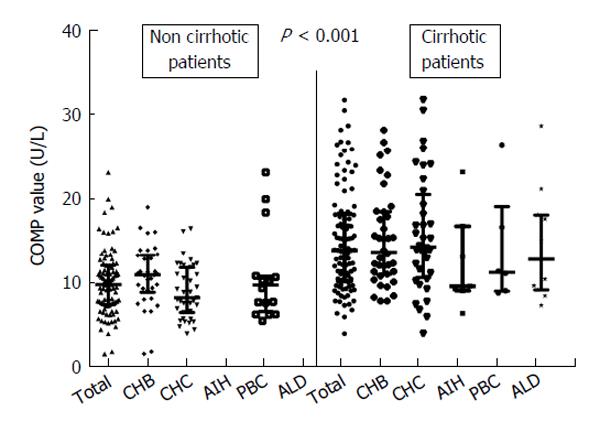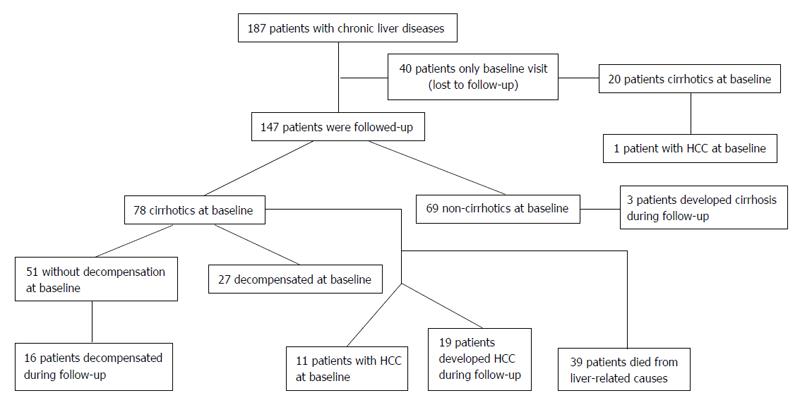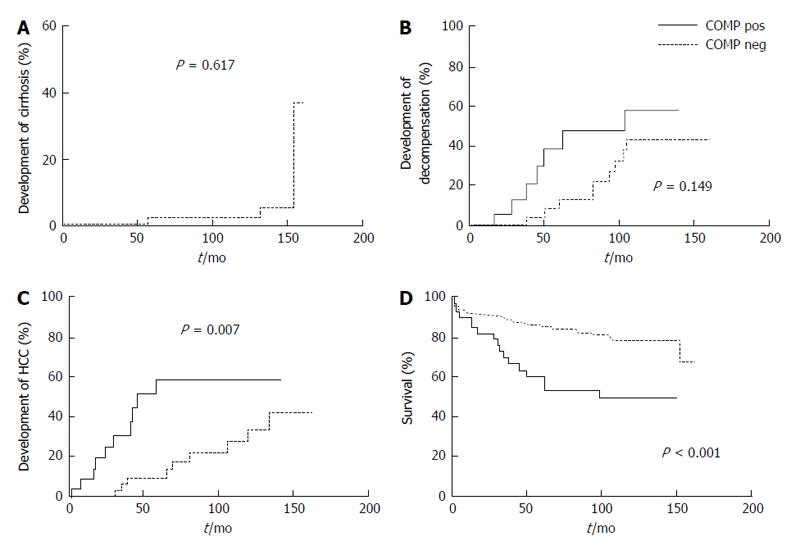Copyright
©The Author(s) 2015.
World J Hepatol. Jul 18, 2015; 7(14): 1875-1883
Published online Jul 18, 2015. doi: 10.4254/wjh.v7.i14.1875
Published online Jul 18, 2015. doi: 10.4254/wjh.v7.i14.1875
Figure 1 Cartilage oligomeric matrix protein antigen values in the non-cirrhotic and cirrhotic patients in total and according to the etiology of liver disease.
Cartilage oligomeric matrix protein (COMP) antigen titers were significantly higher compared to non-cirrhotic patients irrespectively of the etiology of liver disease. Bars indicate median values with interquartile range. CHB: Chronic hepatitis B; CHC: Chronic hepatitis C; AIH: Autoimmune hepatitis; PBC: Primary biliary cirrhosis; ALD: Alcoholic liver disease.
Figure 2 The follow-up schedule diagram of the 187 patients enrolled in the study.
HCC: Hepatocellular carcinoma.
Figure 3 Kaplan-Meier analysis of patients according to cartilage oligomeric matrix protein antigen values (cartilage oligomeric matrix protein-positive vs cartilage oligomeric matrix protein-negative).
Only, three patients, that were cartilage oligomeric matrix protein (COMP)-negative, developed cirrhosis during follow-up (A). A trend for more rapid development of decompensation in COMP-positive patients was noticed (B). The rates of HCC development (C) and liver-related mortality (D) are significantly higher in COMP-positive group compared to COMP-negative group by log-rank test. HCC: Hepatocellular carcinoma.
- Citation: Norman GL, Gatselis NK, Shums Z, Liaskos C, Bogdanos DP, Koukoulis GK, Dalekos GN. Cartilage oligomeric matrix protein: A novel non-invasive marker for assessing cirrhosis and risk of hepatocellular carcinoma. World J Hepatol 2015; 7(14): 1875-1883
- URL: https://www.wjgnet.com/1948-5182/full/v7/i14/1875.htm
- DOI: https://dx.doi.org/10.4254/wjh.v7.i14.1875











